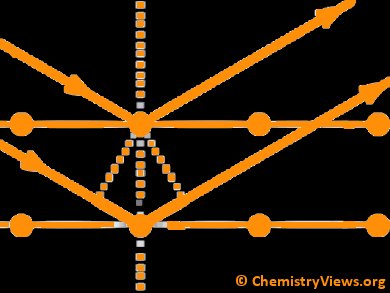X-Ray diffraction patterns have been used to reveal the structures of, e.g., sugar crystals or insulin. However, the technique has its limitations due to the so called phase problem: the data loss when tapping data from a three-dimensional crystal into two-dimensions. By this, the magnitude of the diffraction waves is recorded, but not the phase information. Although the latter would give information on the precise position of the atoms in the crystal and by this simplify the mathematics and allow working with lower resolution data and much smaller crystals.
John Spencer and colleagues, Arizona State University, Tempe, AZ, USA, have demonstrated a numerical simulation to extract 3D data. They combine diffraction patterns from dozens of nanocrystals for a given compound. This allows to obtain the between-the-peak data even if the fundamental building blocks, the unit cells, are incomplete in many of the nanocrystals.
Many compounds, like proteins, are reluctant to form large crystals but can form nanocrystals. Therefore, the authors think that their work offers a powerful approach to crystal structures of hard to crystallize materials like in biomedical and pharmaceutical sciences.
 Ab-initio phasing using nanocrystal shape transforms with incomplete unit cells,
Ab-initio phasing using nanocrystal shape transforms with incomplete unit cells,
H. Liu, N. A. Zatsepin, J. C. H. Spence,
IUCrJ 2014, 1, 19–27.
DOI: 10.1107/S2052252513025530





That was interesting. It discusses how it works.